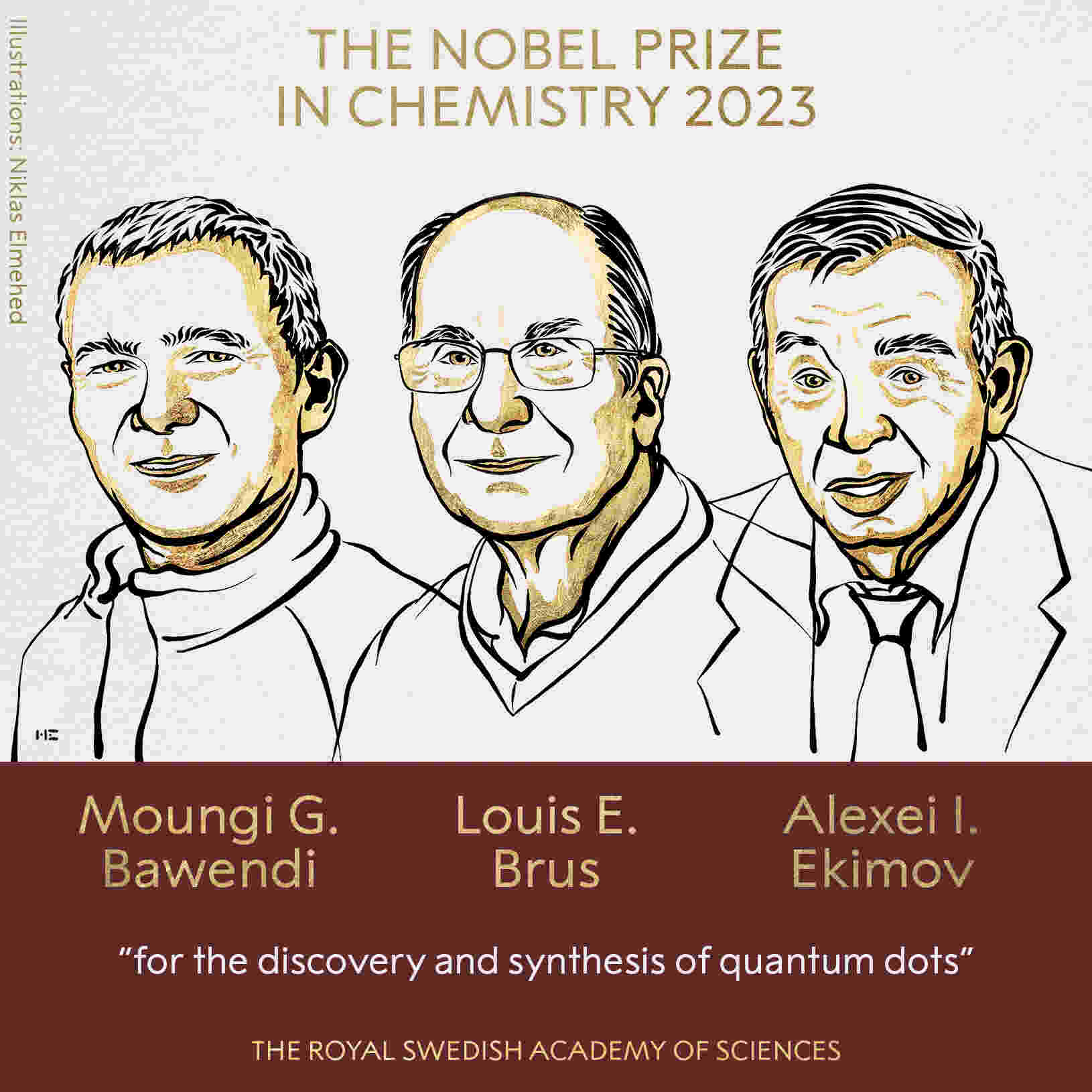The Nobel Prize 2023 in chemistry has been given to Moungi G. Bawendi, Louis E. Brus, and Alexei I. Ekimov for their work in the field of chemistry, where even the smallest particles have tremendous promise. Their ground-breaking research into the synthesis and discovery of quantum dots has opened up a world of opportunities that may change many facets of our life. This article explores their accomplishments and the exciting potential of quantum dots.
Investigating Quantum Dots: the Nano World
Nanoscale particles known as quantum dots have the potential to revolutionise a number of industries, including:
- Flexible Electronics: Imagine electronics that bend and adapt to our needs.
- Tiny Sensors: Small but powerful sensors with applications beyond our imagination.
- Thinner Solar Cells: Making renewable energy solutions even more efficient.
- Encrypted Quantum Communication: Securing the future of communication.

Visionaries Behind Quantum Dots
Get to know the trailblazers who made it all possible:
- Moungi G. Bawendi: An American chemist with roots in France and Tunisia, based at MIT.
- Louis E. Brus: A visionary working at Columbia University.
- Alexei I. Ekimov: The chief scientist at Nanocrystals Technology, a New York-based company.
Stage for the quantum dot revolution
The precise generation of quantum dots in solution by Moungi Bawendi’s brilliant chemical technique gave researchers control over their size and surface characteristics. According to Bawendi, “We don’t work in isolation in chemistry – teamwork is both a fundamentally important aspect of how science is actually done, and one of the most fun!”
The Quantum Dot Era’s Unveiling
The invention of quantum dots, the smallest elements of nanotechnology, has earned the Nobel Prize in Chemistry for 2023. These quantum-governed nanoparticles have already found use in a wide range of industries, from illuminating displays to assisting surgeons in the removal of tumors.
Unleashing the Quantum Effect
Due to quantum physics, quantum dots have strange characteristics. When particles are contained at the nanoscale, events like these appear that contradict the laws of classical physics. Quantum dots’ ability to emit different colours of light depending on their size opens up a wide range of applications in solar cell technology, flexible electronics, medical imaging, display technology, and secure quantum communication.
Also read: Nobel prize 2023 in medicine
Applications Beyond Imagination
The potential applications of quantum dots are as diverse as they are promising:
- Display Technology: Enhancing the quality of LED lamps and television screens.
- Medical Imaging: Illuminating tumor tissue during surgery for precision.
- Flexible Electronics: Paving the way for adaptable devices.
- Slimmer Solar Cells: Revolutionizing renewable energy solutions.
- Encrypted Quantum Communication: Ensuring the security of sensitive information.
Conclusion
The amazing accomplishments of Moungi G. Bawendi, Louis E. Brus, and Alexei I. Ekimov, who have planted the seeds for a quantum dot revolution, are recognised with the 2023 Nobel Prize in Chemistry. The possibilities created by their work have the potential to transform how we live and interact with technology. The route to a brighter and more inventive future has been revealed by quantum dots, which were created from the intriguing world of quantum effects.
FAQs:
-
What are quantum dots, and why are they significant?
Quantum dots are extremely small nanoparticles with unique properties determined by their size. They are significant because they have a wide range of applications in areas like display technology, medical imaging, and secure communication.
-
How do quantum dots work in display technology?
Quantum dots can enhance the quality of displays by emitting vibrant and clear light. Their size determines the color of light they emit, making them valuable in improving screen performance.
-
What is the potential of quantum dots in medical imaging?
Quantum dots can illuminate tumor tissue during surgery, aiding surgeons in precise removal. Their small size and unique properties make them ideal for this application.
-
How might quantum dots contribute to flexible electronics?
Quantum dots hold promise for flexible electronics, enabling the creation of adaptable devices that can bend and conform to various shapes and needs.

